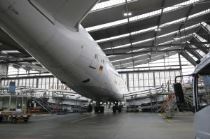 The Wall Street Journal has shown that there is very little room for profit in the aviation industry. In fact, once you have included the relatively fixed costs of taxes, salaries and fuel among others, the margin is often around just 1 percent.
The Wall Street Journal has shown that there is very little room for profit in the aviation industry. In fact, once you have included the relatively fixed costs of taxes, salaries and fuel among others, the margin is often around just 1 percent.
So how can airlines maximize their revenue with such tight margins? I think the answer lies in their maintenance operations. An integrated approach to Maintenance, Repair and Overhaul (MRO) can maximize an airline’s profit margin by extracting more value from IT investment, at the same time as ensuring compliance with regulatory and safety requirements. And the sums indicate that if operators can reduce their maintenance costs by just ten per cent, they could double their profits.
Bottom line benefits of reducing maintenance costs
Adopting a holistic approach that integrates maintenance across the enterprise – from quotation handling, maintenance planning and execution, to configuration management, supply chain and logistics, cost tracking and invoicing – results in lower operational and inventory costs as well as efficient workforce management, financials, human resources and of course, enhanced business intelligence. This will provide airlines with a real business differentiator going forward – driving in that 10 percent maintenance improvement directly linked to airline profit bottom line.
Implementing aerospace enterprise asset management (EAM) software that facilitates these MRO practices may seem a daunting task. And indeed, enterprise software rollouts can be costly and disruptive to a business like aviation. But a modern enterprise solution like IFS Applications does not rely on a disruptive, monolithic approach. Modern enterprise-wide solutions such as ours are modular, meaning that they can be implemented at a pace that can be absorbed by the business without interrupting scheduled business operations – a critical consideration in civil aviation. This modular, step by step approach, however, cannot come at the expense of deep interoperability between MRO and other parts of the business like human resources, which handles maintenance technician capacity, supply chain management which handles maintenance inventory and finance which determines the degree to which expenditures on spare parts or hiring will benefit the business.
So who’s using this approach?
By ensuring a more holistic approach to maintenance operations, I think it’s possible for commercial airlines to use maintenance to enhance margins.
These “new generation” solutions are already being taken up by leading international airlines which have recognized the significance of maintenance efficiency to overall profit. If we take the key area of engine MRO, the IFS Applications MRO solution is in use by GA Telesis (previously Finnair Technical Services) and Alitalia Maintenance Systems.
Emirates, one of the world’s fastest growing international airlines with one of the youngest fleets in the industry, chose the holistic IFS Applications 8 solution to manage its new 90,000 square meter engine overhaul facility in Dubai. In addition to the robust engine MRO capability it also delivers Corporate Performance Management to ensure strategy is driven into business operations.
Next steps
At IFS, we are obviously enthusiastic about the potential that MRO and EAM hold when it comes to driving margin for the civil aviation space. We would love to share that enthusiasm with you, learn about your unique business challenges and determine to what extent we can help you surmount them. Contact your regional IFS office and ask to speak to one of our aerospace experts. We’ll look forward to meeting you!